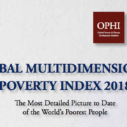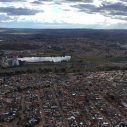
Search
2018 UNGA | MPPN Side Event: Using the MPI to guide innovative policies to eradicate poverty in all its dimensions
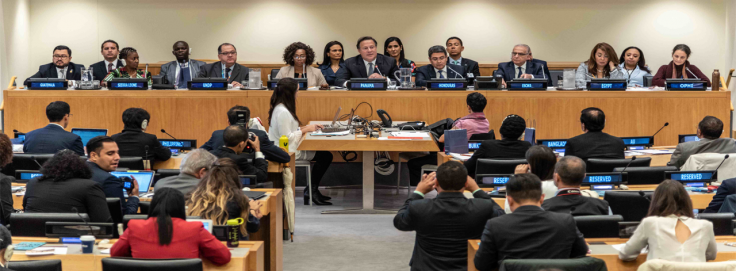
High-Level Side Event at the 73 United Nations General Assembly
Using the Multidimensional Poverty Index (MPI) to guide innovative policies to eradicate poverty in all its dimensions
25 September 2018, 11am-1pm, CR 2, UN HQ, New York
This side event featured how countries are using multidimensional poverty metrics to fight the interlinked features of poverty in the Sustainable Development Goals (SDGs), including SDG1: End poverty in all its forms everywhere. High-level participants from 19 countries and international institutions shared their experiences developing and utilizing multidimensional poverty metrics to measure poverty and design policies to eradicate poverty and work towards achieving the SDGs.
The event was hosted by the Government of Panama on behalf of the Multidimensional Poverty Peer Network (MPPN), with the support of the Oxford Poverty and Human Development Initiative (OPHI).
Moderated by OPHI Director Sabina Alkire, eminent speakers included: President of Panama Juan Carlos Varela, President of Honduras Juan Orlando Hernández and Vice-President of Costa Rica Epsy Campbell Barr. Further input was provided by high-level representatives from the Philippines, Bangladesh, Sierra Leone, Guatemala, South Africa, Mexico, Egypt, UN-ESCWA, the World Bank for Latin America and the Caribbean, UNDP, UNICEF, UN-ECLAC, the African Union, Burkina Faso, and Spain.
The event followed the 20 September 2018 joint release by OPHI and the UNDP Human Development Reports Office of the updated global Multidimensional Poverty Index (MPI) data for 2018. The 2018 global MPI includes adjustments to indicators so that the global MPI better aligns with the SDGs.
Highlights from the discussion included:
 H.E. Juan Carlos Varela, President of Panama
H.E. Juan Carlos Varela, President of Panama
My government adopted the Multidimensional Poverty Index as a decisive step to change the paradigm of development in our country placing the human being in the center, giving name and face to the figures and statistics. The MPI allowed us to capture those dimensions of human poverty that constitute an obstacle to development, serving as a fundamental tool for the development of policies and the allocation of resources with social criteria.
For this reason in 2017 we were the first country in Latin America and the Caribbean to develop the first MPI for children and adolescents in the region. Experience that today we make available to all the countries that make up the Multidimensional Poverty Network as a step towards the correct direction towards the fulfillment of the first Sustainable Development Goal (SDG). This new instrument makes it possible to capture the hardships suffered by children and adolescents and understanding that they are different from those suffered by adults, have much deeper and permanent effects, so as to guide and monitor the policies of each State that guarantee development.
 H.E. Juan Orlando Hernández, President of Honduras
H.E. Juan Orlando Hernández, President of Honduras
As a government we were always convinced that poverty should not be measured only by income but in a multidimensional way and I particularly want to share with you that having been born in the rural sector of my country and grown up and lived in cities, I understood better why we should not measure only the issue of income. In the rural sector you can live with less money and live more comfortably, I tell you from experience.
In the measurement of Multidimensional Poverty we have had the following benefits: 1. Follow up and evaluate the program Vida Mejor as a multidimensional platform to serve the most needy and that allows us to make adjustments to achieve more efficiency and effectiveness. 2. Substantially improve inter-institutional and intersectoral coordination with comprehensive intentions. 3. Targeting poverty at the territorial level, attention to ethnic groups and vulnerable groups. 4. The identification of a specific group, for example, attention to early childhood, preschool education, attention to coverage of education from seventh to ninth grade.
 *H.E. Epsy Campbell Barr, Vice-President of Costa Rica
*H.E. Epsy Campbell Barr, Vice-President of Costa Rica
I would like to emphasize what it means to have this perspective of multidimensional poverty and of its counterpart multidimensional development and put it in the context of the 2030 Agenda for Sustainable Development. Costa Rica has understood that it assumes a more comprehensive perspective, a transformative perspective, a perspective that look at the lives of people in all their dimensions, their own well-being and that really is a qualitative contribution.
We came from a time when the approach to poverty issues was limited not only to income but also was not framed in a general umbrella of development. Not leaving anyone behind is a responsibility but it is a responsibility in perspective in which we clearly have the development standards where we believe that people should be, where citizen action should be based and where we should place the different actors of the society to generate the commitments related to the development of the sectors that have been most violated. The implementation of this methodology allowed Costa Rica to reduce Multidimensional Poverty from 20% to 18%, 20 thousand families managed to get out of poverty precisely because we had the possibility of doing a much more comprehensive approach. We believe that this perspective of poverty and multidimensional development is a more complete perspective that allows us to analyze in a better way the situation of vulnerability that some family members encounter, but it is also the path that we must take to achieve the Sustainable Development Goals.
Our experience in implementing the Multidimensional Poverty Index has not only improved and transformed public policy in our country, but has allowed our actions to have an impact on the daily lives of thousands of people. Many of those people are women who they found themselves in a situation of absolute exclusion.
 Luis Felipe López-Calva, UNDP Regional Director for Latin America and the Caribbean
Luis Felipe López-Calva, UNDP Regional Director for Latin America and the Caribbean
“We jointly with OPHI presented global numbers for MPI that showed three main messages: there are 1.3 billion MPI poor people in 104 countries for which data were available, half of them are children, and this represents about 25% of the total population in these 104 countries.”
“…the MPI process has led, at the national level, to a process in which there are many actors who are convening to discuss what it means to be poor in that context, so they discuss what are the dimensions, what are the thresholds, and what are the challenges to define poverty in that specific context. The process itself has a lot of value. …it has become also an instrument for policy coordination… it has also allowed us to identify better information gaps and to improve national information systems. And finally, it has also become an instrument of accountability.”
 H.E. Rosemarie G. Edillon, Deputy Director General, National Economic and Development Authority, Philippines
H.E. Rosemarie G. Edillon, Deputy Director General, National Economic and Development Authority, Philippines
“Back in 2015, our agency, the National Economic and Development Authority sought to determine the aspirations of Filipinos over the long term, a span of 25 years. We conducted a nationwide survey where we asked respondents, numbering 10,000 what they want to be, to do and to have by 2040. We have summarized the results into three broad aspirations: to enjoy strongly-bonded relationships, to live a comfortable lifestyle and to feel secure about the future. Clearly, increasing income is but one of the many factors that figure into the aspirations of Filipinos.”
“The multidimensional poverty index (MPI) presents itself as an alternative measure of poverty. Actually, I would say that it is more relevant in depicting poverty as it is closer to the concept of a comfortable lifestyle; if you are multidimensionally poor, then you are not enjoying a comfortable lifestyle. It is also ideal for identifying the poorest of the poor, as it depicts multiple deprivations. It also provides an objective method for identifying beneficiaries of targetted assistance programs. In addition, it makes for easier and less expensive data collection.”
 H.E. Shamsul Alam, Member (Senior Secretary), National Planning Commission, Bangladesh
H.E. Shamsul Alam, Member (Senior Secretary), National Planning Commission, Bangladesh
“The government of Bangladesh recognizes the importance of the multidimensional nature of poverty”.
“We should try to include indicators that are not only relevant to the country context but also comparable to the global perspective.”
 H.E. Nabeela Tunis, Minister of Planning and Economic Development, Sierra Leone
H.E. Nabeela Tunis, Minister of Planning and Economic Development, Sierra Leone
…the many faces of poverty cannot be captured by income measures alone. Knowing not just who is poor but how they are poor is essential for effective human development programs and policy decisions.
This straightforward yet rigorous index allows us in government to understand the various sources of poverty at the national as well as the subnational levels for our various population groups and as such be able to target the human development plans accordingly. We have derived our national development priorities for the next couple of years from the MPI analyses. It has given us a direction of where we want to go and how we want to get there.
H.E. Carlos Velasquez Monge, Minister of Social Development, Guatemala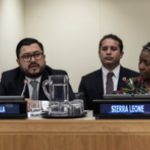
We are taking a giant step forward by joining the Multidimensional Poverty Network and creating our own multidimensional poverty index. The development of our Multidimensional Poverty Index will help ensure that budgeted resources are properly targeted for our social programs.
Guatemala will launch its Multidimensional Poverty Index next December and we are sure that with this will change the concept of poverty at the national level, but we are also confident that we will be able, through this index, to be effective in the methodology of our social programs.
 H.E. Risenga Maluleke. Statistician General South Africa
H.E. Risenga Maluleke. Statistician General South Africa
The reason South Africa is in favour of using the SAMPI, is because the SAMPI looks at deprivation in multiple aspects of life such as education, health, asset ownership, economic activity and others. And of course put all identified aspects together in an index to measure poverty, it helps to evaluate the effectiveness of poverty reduction strategy implemented since the dawn of our democracy.
SAMPI indicates that the contribution of government social wage program towards poverty reduction, the contribution of government poverty reduction programs such as fee-free schools, free primary healthcare, access to free basic services, provision of free formal housing, and others, are captured in the SAMPI. However, many of these services are difficult to quantify in monetary terms, especially at household level.
There’s a great effort made by StatsSA to ensure that SAMPI is used in policy making. We are in the process of discussing with relevant stakeholders to make the SAMPI the official permanent poverty measure.
H.E. Oliver Arroyo, General Director for Evaluation and Monitoring of Social Programs, Mexico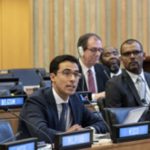
A further example of the application of the MPI as a guiding criterion of public policy is the construction of the Poverty Observatory. This interactive online public platform, which seeks to show the assessment of poverty and its dimensions among other development indicators, will allow SEDESOL to address three aspects: 1. Indicate the evolution of poverty at the national, state and municipal levels. 2. Analyze poverty and its targeting so that states and municipalities can more effectively address structural poverty at the local level. 3. A repository of good practices in the fight against poverty derived from the experiences of other states and municipalities.
H.E. Ghada Waly, Minister of Social Solidarity, Egypt
Egypt has been going through fundamental changes where the are serious concerted efforts to achieve the SDGs and to develop a comprehensive social safety net addressing multidimensional poverty and aiming at increasing choices and opportunities.
Economic reforms aiming at addressing structural challenges have taken place coupled with a large social safety protection program that has been built around the indicators we use and see in the multidimensional poverty index.
Mohamed Ali Alhakim, Executive Secretary, UN-ESCWA
At the regional level, ESCWA will continue to lead the work on monitoring Multidimensional Poverty to inform policy makers and to serve as inputs to the SDG 1. We are collaborating closely with OPHI, and with League of Arab States, and UN Agencies – UNDP is one of them – in this direction, and we will not spare any effort to improve our measurement techniques building on the Arab MPI.
As Arab countries are increasingly adopting multidimensional poverty measures, ESCWA is to support the bridge and bridge the gap between the measurement and policy.
Jorge Familiar, Vice-President of the World Bank for Latin America and the Caribbean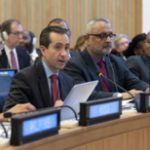
The MPI is transparent, it is a measure that can be easily understood by the population, and it’s a measure that serves as a tool for monitoring progress across a range of government actors.
All these new measures introduce new elements that will help us piece together the poverty puzzle, and help countries to prioritize their investments so they can provide better opportunities for all.
Laurence Chandy, Director of Data, Research and Policy, UNICEF
We’ve learned something really significant about the role of national multidimensional poverty measures when they are combined with age disaggregation to draw attention to the composition of poor households, and thus the condition of children–and the further benefits that then arise when child-specific multidimensional poverty measures are developed.
Saurabh Sinha, Chief of Social Protection and Employment Section, UN-ECA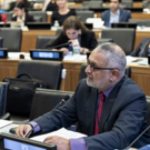
For the last few decades, if you see the growth of our understanding of poverty, it has really meant that we have understood poverty to be more than just a question of numbers of people below a certain consumption line. And so, as a result of our development of understanding of poverty, there is a need for measuring poverty in all its dimensions. To that extent, the Multidimensional Poverty Index plays a very important role.
In particular, in Africa, when we work with member states, we realize that the MPI provides and enlarges policy options, especially for some kind of fiscal decentralization. Because at the end of the day, what does the MPI do? The MPI is really providing us a more nuanced version of poverty. It provides a clear indication of what the drivers of poverty are.
ECA remains committed to working with member states in extending our understanding of poverty, extending our understanding of the dimensions of poverty, and what needs to be done to reduce poverty in all its dimensions in Africa.
Daniel Titelman, Director of Division of Economic Development, UN-ECLAC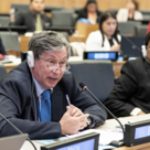
The MPI allows a better link between poverty analysis and social rights approaches on the one hand, and also it improves our capacity to evaluate public policies beyond income policies. So we think that this type of effort in terms of increasing not only the measurement, but also the understanding of the dynamics of poverty, is very important–[as] having a better understanding and better measurement of poverty will permit us to improve our policy capacity to fight poverty.
We are very happy that many countries in the region are moving in this direction, and we hope that we will keep moving with more countries and deepening the efforts in the countries that have already started this analysis.
Victor Harison, Commissioner for Economic Affairs, African Union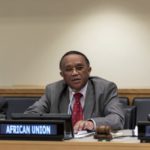
Although income poverty provides very useful information, it does not capture the multiple aspects that contribute to poverty, such as access to education, living standard, health, other non-income deprivations, and it does not really show how poor people are poor. The MPI goes beyond a traditional focus on income to reflect multiple deprivations to measure people who cannot reach the minimum internationally agreed indicators of basic functioning, such as education, health, and living standards.
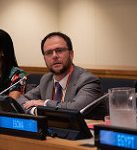 Gabriel Ferrero, Director of Sustainable Development Policies, Ministry of Foreign Affairs, Spain
Gabriel Ferrero, Director of Sustainable Development Policies, Ministry of Foreign Affairs, Spain
The experience of all the continents and especially in the Latin American community has shown that the multidimensional poverty index has been the best possible indicator for the evaluation of the first SDG, to guide public policies and to make reality the principle of not leaving to no one behind.
Since the 2030 agenda is universal and the use of the multidimensional poverty index is also transformative and useful for the OECD countries and for my country in particular where also the forms of poverty and social exclusion are a reality in many ways, Spain has considered the multidimensional poverty index in its voluntary national review that we carried out in July of this year in the high level political forum and we have included in our action plan for the implementation of the 2030 domestic agenda .

















